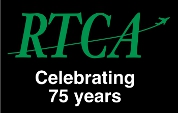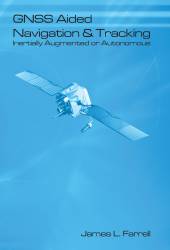Researchers at Cornell University recently released their analysis of the effects of solar radio bursts (SRBs) during a solar flare last December that produced “unprecedented” fades in received GPS signal power at L1 and L2 over an extended period.
Researchers at Cornell University recently released their analysis of the effects of solar radio bursts (SRBs) during a solar flare last December that produced “unprecedented” fades in received GPS signal power at L1 and L2 over an extended period.
Numerous reports appeared of high-quality, dual-frequency GPS receivers losing lock on satellite signals during the incident, although ironically some single-frequency C/A-code receivers appeared to do better during the solar event. Receiver “failures” included many at International GNSS Service (IGS) sites and a Federal Aviation Administration Wide Area Augmentation System (WAAS) receiver in Houston Texas, according to the Cornell report.
Coming as it did during the relatively quiet interval between sunspot peaks, the magnitude of the recent event was doubly surprising. It also underlines the question of whether the new GNSS system developments under way with GPS, GLONASS, Galileo, and Compass will occur in time to improve the situation for users. And whether the new signal designs and planned improvements in satellite operations will ameliorate the effects of SRBs.
The next cyclic peak in sunspots — the so-called “solar max” — will occur in 2011, but may affect space weather for 1-1/2 to 2-1/2 years before and after the peak. During the last solar max in 2000, numerous instances of GPS receiver malfunctions were reported. Some scientists believe that SRBs during the 2011 solar max will exceed the levels reached in the previous one.
According to Paul Kintner, Jr., a professor in Cornell’s School of Electrical and Computer Engineering, the sun’s magnetic field is destroyed in solar flares during the sunspot maximum. Some larger flares produce solar radio bursts of broadband noise in the RF spectrum from 10 MHz to10 GHz that may directly affect GPS receivers on the dayside of the earth facing the sun. GPS L1 is centered at 1,575.42 MHz and GPS L2 is at 1,2276 MHz.
A Record Burst. The SRBs discussed by the Cornell scientists were associated with solar flares monitored on December 6 and December 13–14. In some cases the fades in received signal strength exceeded 20 decibels. One power burst recorded at the Owens Valley Solar Array (OVSA) in California’s high desert exceeded one million solar flux units (SFUs) in the 1,200–2,00 MHz band, a record at those frequencies, according to the Cornell researchers.
Kintner says the scaling factor for signal fading is that 10,000 SFU equals 3 dB reduction in GPS carrier-to-noise (C/No) ratio and each doubling of solar radio burst power produces another 3 dB loss. So, for example, 20,000 SFUs equals a 6 dB reduction and 640,000 SFUs equals a 21 dB loss.
Sunspot activity and individual SRBs produce variable and largely unpredictable patterns within the affected portions of the RF spectrum. Data from a WAAS receiver in Honolulu, Hawaii, recorded December 14, for example, showed a “drastic” signal fade at L1 but almost no effect at L2, indicating that little SRB power entered the latter band.
Conceivably, receivers with a wider range of signal-reception and –processing capabilities might do better, as might receivers with flexible designs that adjusted their operation in response to electromagnetic conditions. Although Galileo has some frequency allocation in C-band (between 5,000 and 5,030 MHz), the upper range for currently transmitted GNSS signals is a GLONASS frequency around 1609 MHz.
The lower end of the GNSS spectrum will drop down from L2 by 50 Mhz with the GPS L5 signal, which will appear with the launch of Block IIF satellites in 2008 and lies in the band for aeronautical radionavigation at 1176.45 MHz. The planned Galileo E5a frequency will overlay L5.
Asked about potential benefits of modernized GNSS signals, Kintner told Inside GNSS, “The new L2C signals, especially the L2CL pilot code, may yield better C/No dynamic range and in some situations be more resistant to solar radio bursts. . . . I have not completely thought through the implications of a 10 MHz chipping rate compared to a 1 MHz chipping rate, but there is no a priori reason to think that L5 will not be affected by SRB. The SRB spectral properties are arbitrary and will vary from event to event.”
Reducing SRB Effects. The effects of SRBs on different types of antennas also vary. Omnidirectional antennas receive all signals in view indiscriminately. But controlled radiation pattern antennas can null out signals and interference arriving from particular directions and choke ring antennas alternately increase or decrease signal gain depending on angle of arrival.
“A controlled radiation pattern would in fact make a substantial difference either positive or negative,” says Kintner. “The choke ring antenna with reduced gain at low elevations and increase gain at higher elevations is more sensitive to solar radio bursts at high elevations compared to low elevations.” He also believes that the flex power and spot beam capabilities of new military GPS signals will “absolutely” improve the situation for suitably equipped users.
Kintner says that Cornell hopes to pursue further investigation of into the performance of various types of GNSS receivers in the face of SRBs, as well as whether various signals designs — for example, the binary offset carrier (BOC) waveform at L1 rather than bi-phase skip keying (BPSK) — will make a difference. For more details on the Cornell research on-line, visit their website and follow the “Space Weather” link.
Copyright 2007 Gibbons Media and Research LLC




